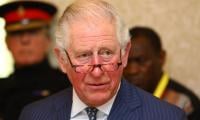WB ranks Punjab better among provinces Pak economy is among
top performers of South Asia
ISLAMABAD: The World Bank (WB) has stated that besides having better indicators in economic, health, water and sanitation and education sector, the Punjab government is putting in efforts to significantly increase the scale of technical and vocational training programmes in an attempt to boost job prospects for the provinces ‘youth bulge’.
Punjab has shown remarkable growth in four sectors studied by the World Bank. As the Punjab is ruled by Chief Minister Shahbaz Sharif, who has been appreciated by the Chinese for pace of development in Punjab and International Department of Central Committee of Communist Party of China Vice-Minister Zheng Xiaosong gave Punjab Chief Minister the title of ‘Shahbaz Speed’.
The WB report says that the services sector in Pakistan is expected to grow by 5.6%, the industrial sector by 6.1% and the agriculture sector by 3.4% by FY17.
The Punjab Development Update May 2017 of The World Bank states that the maternal and infant mortality rates in Pakistan are slowly improving as infant mortality rates improved to 66 deaths per 1000 births (18% decrease between 2005 - 2015); maternal mortality rate improved to 178 per 100,000 live births (29% decrease between 2005-2015); proportion of deliveries with skill birth attendants increased from 37% to 58% between 2006-2015 in Pakistan and the number of women with at least one antenatal checkup visit in Pakistan increased from 56% to 73% between 2007-2015. Similar patterns were witnessed in Punjab as well.
Stunting in Pakistan remains extremely high at 43.7%; this is the 3rd highest in the world and highest in South Asia. The percentage of population that is moderately or severely stunted in Punjab is 39.2%. Other provinces demonstrate higher percentages at KP: 47.8%, Sindh: 49.8%, Balochistan: 52.2%.
The percentage of child immunisation in Pakistan has increased from 49% to 60% between 2005-2015. 70% of children (aged 12-23 months) are fully immunised in Punjab (21% increase between 2005-2015). This is followed by Balochistan at 27%, Sindh at 45% and KP at 58%. Despite improvements in access to maternal health services, inequality has increased particularly among the percentage of institutional deliveries. Among the bottom quintile, 52.7% births in urban areas and 72.7% births in rural areas were taking place at home.
In Education sector, enrollment in primary schools has stagnated over the last ten years. The percentage of gross primary school enrollment in Pakistan remains on or around 91% in 2015. This was 98% in Punjab, higher than the national average and is followed by KP at 92% while Sindh and Balochistan are lagging at 79% and 73% respectively. The gross enrollment rates for middle and secondary school remain low at 62% and 58% respectively.
The percentage of net primary enrollment ratio in Pakistan was 57% in 2015. Punjab saw an increase from 58% to 61% over the last 10 years. KP stands at 56% while Sindh and Balochistan are at 51% and 46% respectively. The percentage of schools with basic facilities (electricity, water, toilets, boundary wall) was 52% for Pakistan in 2015. Punjab stands at 93% with other provinces lagging (Sindh: 23%, KP: 44%, Balochistan: 26%). Literacy rates (10 years and older) have remained between the 58-60% range since 2010. The literacy rates in Punjab have been increasing very slowly and stand at 63%. This is followed by Sindh at 60%, KP at 53% and Balochistan at 44%. Ratio of female to male literacy rate (10 years and older) increased from 0.62 to 0.70 in Pakistan between 2005 and 2015. This stands at 0.77 for Punjab followed by Sindh at 0.70, KP at 0.49 and Balochistan at 0.41. Learning outcomes (proportion of students in year 5 who can read a story in Urdu, Sindhi or Pashto) was reported as 55% in 2015. This fell from 66% to 63% in Punjab between 2013-2014. This is followed by Sindh at 41%, KP at 38% and Balochistan at 33%. Other indicators: Poverty headcount (FY14 poverty line) in Pakistan decreased from 36.8% to 29.5% between 2010-2013. Punjab saw a decrease to 25.3% in 2013. Other provinces followed at 27.6% in KP, 34.2% in Sindh and 56.8% in Balochistan. Punjab remains the most unequal province in Pakistan, with the Gini coefficient increasing from 27.5 in FY02 to 29.7 in FY14. This inequality is the most pronounced and increasing in urban areas.
The Daily Mail recently reported that a government cash-incentive scheme has helped place almost 90,000 underage Pakistani brick kiln workers into school, an initiative aimed at easing the long-standing problem of indentured labour. Under the terms of the Punjab provincial government scheme, which began in January 2016, nearly 88,000 child brick kiln workers were selected for a stipend comprising an initial $20 per child, followed by a recurring monthly payment of $10. The initiative "lowered the opportunity cost of not sending children to school... and families were able to mobilise this stipend to pay their debts," a spokesman for Punjab's Education Minister Rana Mashhood said, Daily Mail reported.
About water and sanitation indicators, the World Bank report says: The percentage of households with access to piped water in Pakistan fell from 29% to 27% between 2005-2010. The percentage of households with access to tap water in Pakistan fell from 34% to 27% between 2005-2015. The percentage of households whose main source of drinking water is tap water in Punjab decreased from 24% to 18% between 2010-2014. Sindh has the highest percentage at 41% followed by KP and Balochistan at 35% and 33% respectively.
The percentage of households with a flush toilet has increased from 52% to 73% between 2005–2015. The percentage of households with a flushing toilet in 2014 was 98% in urban Punjab and 70% in rural Punjab. KP is doing similarly well with 97% in urban areas and 71% in rural areas. Both Balochistan and Sindh are doing better in urban areas (78% and 97% respectively) than in rural areas (14% and 31% respectively). 13% of the households in Pakistan were reported to have no toilet facility at home in 2014. All provinces are doing well in urban areas (Punjab: 1%, Sindh: 1%, KP: 1% and Balochistan: 0% with no toilets at home). Punjab needs improvement in rural areas (24%). Other provinces have lower percentages (Sindh: 16%, KP: 14%, Balochistan: 18%).
Gender inequalities exist however female labour force participation is slowly increasing in Pakistan, from 19.3% in 2005 to 24.8% in 2014. Despite higher rates of education, youth face greater labour market challenges and are more likely to be engaged in informal employment without a contract. Only 35% of all youth is employed with a written contract.
Overall Economic Challenges in Pakistan
Pakistan’s economy is among the top performers of South Asia with an increase in GDP growth rate expected from 4.7% in FY16 to 5.2% in FY17.
However, the following challenges demand that renewed policy emphasis is required on macroeconomic stability, structural reforms and human development to achieve the expected economic growth rate. Revenue Growth is slowing, with the fiscal deficit growing; decline in exports, increasing the current accounts deficit; low investment and savings rates; Energy sector circular debt has resurfaced; significant gaps in tax revenue collection from tax policy and administration shortcomings.
Punjab specifically faces challenges in the following areas which impede growth in the province:
Tax revenue - increasing own-source revenue; skills development and training - equipping youth with employable skills; human development outcomes - ensuring the poor share in the benefits of growth; agriculture Sector - lifting agricultural productivity and market distortions - addressing distortive subsidies particularly in wheat production.















